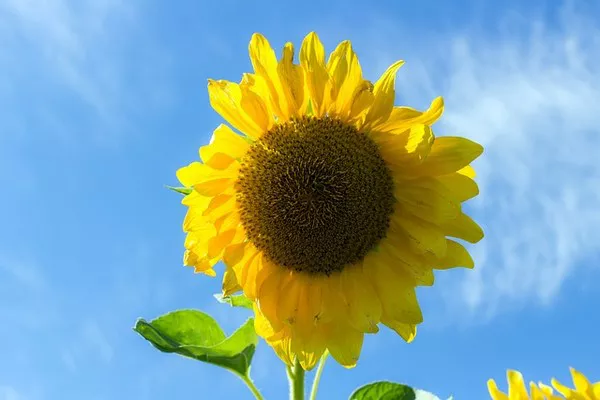Sunflowers, with their vibrant yellow petals and towering stature, have captured the hearts of people around the world for centuries. Often associated with sunshine, happiness, and warmth, these magnificent flowers hold a deep and diverse symbolism across different cultures and societies. In this article, we will explore the rich history and various meanings that sunflowers represent, touching upon their significance in art, literature, spirituality, and everyday life.
Historical and Cultural Significance of Sunflowers
Sunflowers (Helianthus annuus) are native to North America and were cultivated by indigenous peoples long before their discovery by European explorers. The Aztecs, in particular, held sunflowers in high regard, using them for food, medicine, and as a symbol of the sun god, Huitzilopochtli. When Spanish conquistadors brought sunflowers back to Europe in the 16th century, their popularity quickly spread, and they became a beloved ornamental plant.
In different cultures and historical periods, sunflowers have symbolized a wide range of meanings, including:
a. Adoration and Loyalty: In Victorian times, giving someone a bouquet of sunflowers symbolized adoration and loyalty, expressing a message of unwavering devotion.
b. Hope and Optimism: Due to their association with the sun, sunflowers have been interpreted as a representation of hope and optimism, as they turn to face the sun’s rays throughout the day.
c. Abundance and Prosperity: The large, abundant seeds of sunflowers have long been associated with fertility, prosperity, and a bountiful harvest.
d. Spiritual Significance: Some Native American tribes saw sunflowers as symbols of spirituality, with their golden petals representing the circle of life and the connection between earth and sky.
Sunflowers in Art and Literature
Sunflowers have left an indelible mark on the world of art and literature, inspiring artists and writers alike. One of the most renowned representations of sunflowers is Vincent van Gogh’s series of paintings titled “Sunflowers.” Van Gogh’s use of vibrant yellow hues and bold brushstrokes conveys the essence of the flowers’ vitality and their association with joy and warmth. These iconic paintings have become symbols of artistic brilliance and continue to captivate art enthusiasts worldwide.
In literature, sunflowers often feature as powerful symbols. In William Blake’s poem “Ah! Sunflower,” the flower symbolizes the fleeting nature of human existence and the desire for spiritual transcendence. Similarly, poet Allen Ginsberg references sunflowers in his famous poem “Sunflower Sutra,” using them as a metaphor for seeking beauty and meaning amidst the chaos of modern life.
Sunflowers in Spirituality and Religion
Throughout history, sunflowers have held spiritual significance for many cultures and religions. In Native American traditions, sunflowers were offered as symbols of gratitude and reverence to the sun, which was considered a powerful deity. For some tribes, sunflowers played a part in sacred rituals and healing practices.
In Christianity, sunflowers have been linked to the idea of devotion and faithfulness to God. Their habit of following the sun’s movement throughout the day was likened to believers following the light of God.
Moreover, sunflowers are frequently associated with the summer solstice and the concept of renewal and spiritual growth. Their ability to turn and face the sun was thought to represent an eternal connection with the divine source of light and life.
Sunflowers as a Symbol of Environmental Consciousness
In recent times, sunflowers have also taken on a new symbolism in the context of environmental consciousness and sustainability. These resilient flowers are known to be hyperaccumulators, capable of absorbing heavy metals from contaminated soil. As such, they have been used in phytoremediation projects to clean up polluted areas, making them a symbol of hope and environmental restoration.
The sunflower’s status as a renewable source of energy has also garnered attention. Sunflower oil, extracted from the seeds, is used for cooking, and its biodiesel variant has shown promise as a cleaner alternative to conventional fossil fuels.
Sunflowers in Modern Culture and Everyday Life
In contemporary culture, sunflowers continue to hold their allure as a symbol of positivity, happiness, and brightness. Their appearance in gardens, floral arrangements, and even in fashion prints reflects their widespread popularity. Sunflower motifs are used in interior design to create spaces that exude warmth and cheerfulness.
Sunflowers are also commonly gifted on occasions that celebrate joy and happiness, such as birthdays, anniversaries, and graduations. They serve as a reminder of the simple pleasures in life and encourage a positive outlook on the future.
Sunflowers in Language of Flowers
During the Victorianera, flowers were often used to convey emotions and messages in a discreet manner. This language of flowers, known as floriography, assigned specific meanings to various blooms. Sunflowers were associated with themes such as adoration, loyalty, and lasting happiness, making them a popular choice for conveying heartfelt sentiments.
Cultivating Sunflowers and Their Eco-Friendly Benefits
In addition to their symbolic meaning, cultivating sunflowers can bring numerous eco-friendly benefits to both gardeners and the environment. Sunflowers are relatively easy to grow and thrive in a wide range of climates. Their extensive root systems contribute to soil health by improving aeration and drainage. Furthermore, sunflowers attract beneficial insects, such as bees and butterflies, supporting pollination and biodiversity.
Conclusion
Sunflowers, with their radiant appearance and multifaceted symbolism, have captured the imagination of people across the globe. From their historical and cultural significance to their representation in art, literature, and spirituality, sunflowers continue to be a cherished symbol of positivity, hope, and joy. Whether adorning gardens, brightening up interiors, or inspiring environmental consciousness, these golden beauties will undoubtedly remain a beloved emblem of nature’s enduring splendor for generations to come.


